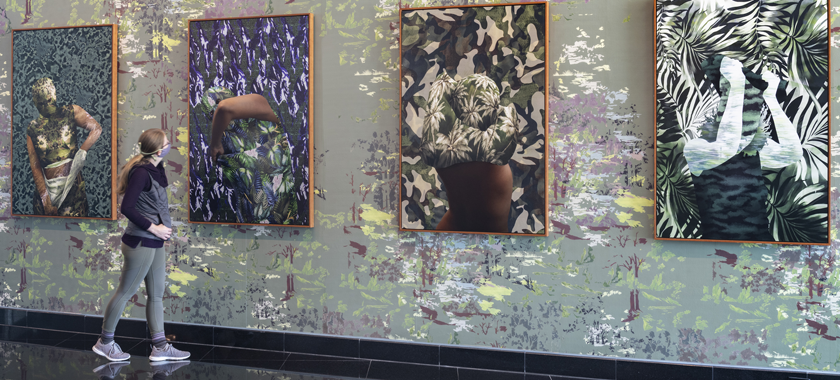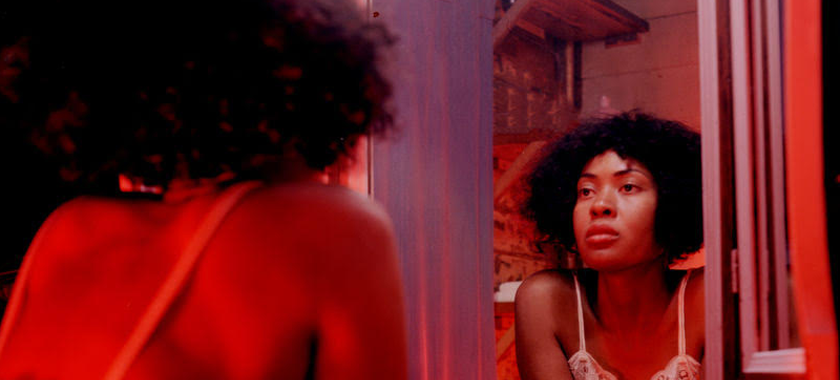
How Much Should I Sell This For? A Pricing Guide for Visual Artists
It can be hard to put a price on the value of your time, materials, and creativity. Read on for tips on how to navigate.
“How much should I sell this for?” is a question nearly every artist has asked themselves. This question can be tricky, as not only is it difficult to quantify the value of art, but the art market is unique in that it doesn’t follow the same rules and logic as typical sales.
While there is no set way to price your art, this post offers tips from art world insiders that you can use to value your work. The expertise in this article is geared towards visual artists without representation, and comes courtesy of:
- Heidi Elbers, Director of Exhibitions, New York Academy of Art
- Paul Efstathiou, Director of Contemporary Art, Hollis Taggart Gallery
- Louky Keijsers Koning, Director, Barbara Hammer Estate, and Principal, Keijsers Koning Appraisals

Peer Research
Before you start pricing, try to get a sense of the market. Efstathiou suggests looking at your peers and seeing what their works are going for. To identify your peers, consider who is making work that is somewhat similar to yours in terms of aesthetics, size, and material. In researching examples, be sure to identify artists who are in a similar stage of their career as you. The more realistic you are in who you’re comparing yourself to, the clearer a picture of where you may want to price.
“If you feel like you match this other artist who is showing at galleries in age, education, activity, shows, and momentum, see where they’re based at their prices. Get two or three examples,” says Efstathiou.
If you’re comfortable, ask these artist peers how they approach pricing. Go to galleries and do the same competitive analysis, assuming pricing is available.* Keijsers Koning suggests checking Artsy, as some galleries list prices there.
*Note: Galleries are typically paid a 40-60% commission of the selling price of the artwork, so the artist takes away roughly 1/2 of the price.
Pricing by Size
Keijsers Koning encourages artists to price by size, and cautions against playing favorites when pricing your work. “You are not the one who decides what is more likable,” she says. “If the works are the same size in general, I would price them the same way if they are from the same body of work.”
She continues: “Say you establish pricing for one size, and then you go within the same body of work, to work a little bit smaller. Make sure that when you have established a certain price point that the smaller work is evenly lower and that a bigger work is evenly higher.
Efstathiou agreed, adding that some artists he knows will even calculate by the square inch.

Pricing Editions
Working in editions in video, sculpture, or prints? Efstathiou suggests that emerging artists keep a set price for simplicity, and to avoid any confusion with collectors.
Keijsers Koning noted “stepped pricing” as another route to consider. For example, “one of the editions is priced at $1,000, then the second one is $1,200, and the third one goes up to $1,400 or something. The intervals can vary, and it depends on how popular a work may be,” she says. This idea is predicated on the “limited” nature of the works: the closer you are to the end of the run, the more valuable. This scenario may make more sense if you are slightly more established.
Regardless of how you approach it, do you research to see how this type of pricing works within your particular medium to make an informed decision.
Valuing Your Time
Keijsers Koning acknowledges that for emerging artists, one of the more nebulous aspects to pricing works is placing a value on your time.
Keijsers Koning recommends emerging artists standardize the pricing in a way that makes sense to buyers/collectors. In other words, group like terms together. Pieces in the same body of work with the same scale/materials should be priced similarly, even if you’re particularly fond of one piece, or labored for hours on another.
In the studio, it makes sense for the process to be incongruous: spending 100 hours on one painting can teach you what you need to know so that you can spend 1 hour on the next. From an outside perspective, encapsulating that information in the price may confuse your buyers.
Keijsers Koning suggests starting with a baseline price for a body of work that you have, and creating other baseline prices for other different bodies of work.

Starting Low
It’s better to start off on the lower side, and then adjust accordingly (within reason!).
Says Keijsers Koning: “It’s better to start lower than to start higher, and easier to test the waters and then raise prices if your work starts selling like hot cakes.”
Staying Consistent
Once you set pricing benchmarks for one body of work, the general rule of thumb is not to change them. “No matter where you are showing [including different cities/regions/countries], once you have that price range you don’t want to change it,” says Efstathiou.
“So, 48” x36” is always $5,000. Keep that at $5,000 everywhere you show or go to. As a contemporary collector myself, if I notice different prices in different areas—that, to me, is a red flag and I back off that investment,” he added.
If you are creating works that vary slightly, but use the same medium/s and sizing conventions, Keijsers Koning recommends keeping pricing consistent. “It becomes a little difficult because then you place a judgment for the viewer,” she says. For example, if you price one work higher, there’s an implication that that work is better.

Creating Your Own Formula
There is no one way to price your work, and the consensus among Efstathiou, Keijsers Koning, and Elbers is to create a formula that works for you. Try to get a sense for what your audience is paying, what you feel comfortable asking for, and what is sustainable for you.
Consider your goal(s) for selling work: Is it to establish yourself in a certain market? To break even on your material costs? To maximize profits? To sell to a particular clientele? This may help you decide how to price, particularly if you are just starting out.
Gallery Representation
Selling works on your website, from your studio, and off of Instagram are a few pathways for sales outside of a gallery setting.
These independent sales will not dissuade a gallery from wanting to work with you! To the contrary, the panel agreed that when artists directly facilitate sales in this way, it is a positive thing—as galleries look for a demonstrated history of sales when considering representation. Then, if a gallery ultimately decides to represent you, the terms of how you will approach sales as a partnership will be a conversation and agreement.
If you’re interested in getting gallery representation, Efstathiou recommends getting your work out there however you can and actively exhibiting. Essentially, the more people who see your work, the greater your chances of getting on the radars of galleries.
He also emphasizes that the quality needs to be there. “I will look at a certain momentum, I do look at CVs. But at the end of the day, it’s going to come down to the artwork. And if I have chemistry with it and can connect with it,” he added.
–Compiled by Amy Aronoff, Senior Communications Officer
These insights were shared as part of “Valuing the Invaluable: Pricing Your Artwork,” presented by NYFA and the Office of the Arts, City of Alexandria.
You can find more articles on arts career topics by visiting the Business of Art section of NYFA’s website. Sign up for NYFA’s bi-weekly newsletter to receive artist resources and upcoming events straight to your inbox.
NYFA Learning provides artists, creators, students, and arts administrators with tools, strategies, and advice for building sustainable careers. We collaborate with organizations, academic institutions, and cultural partners to bring our programs to a broad range of national and international creative communities.